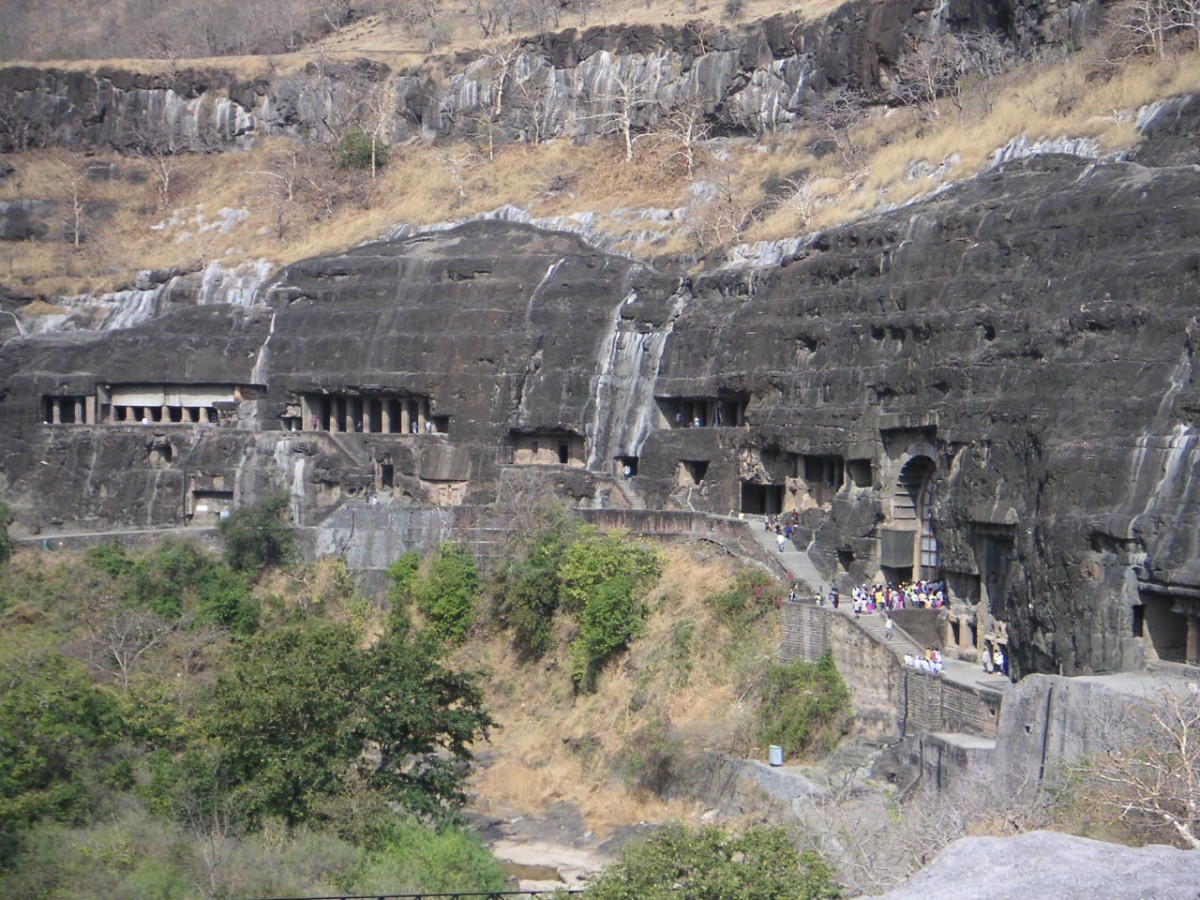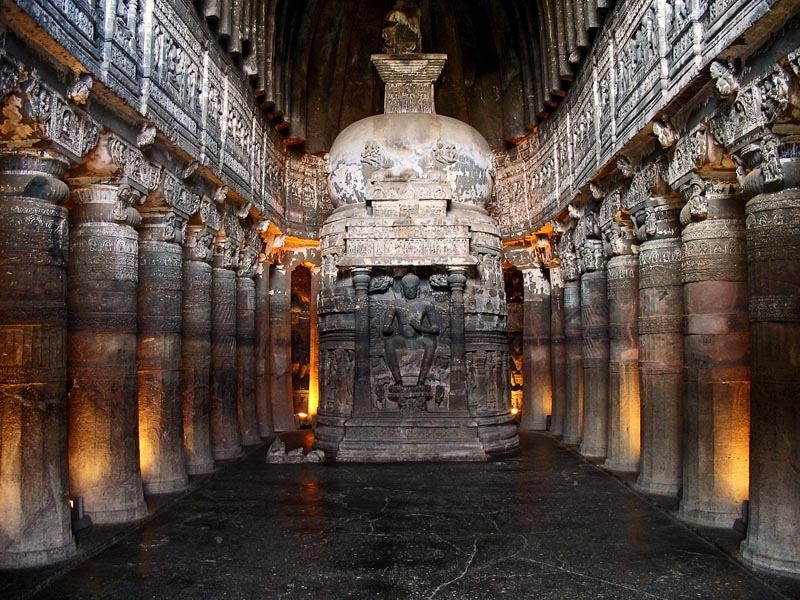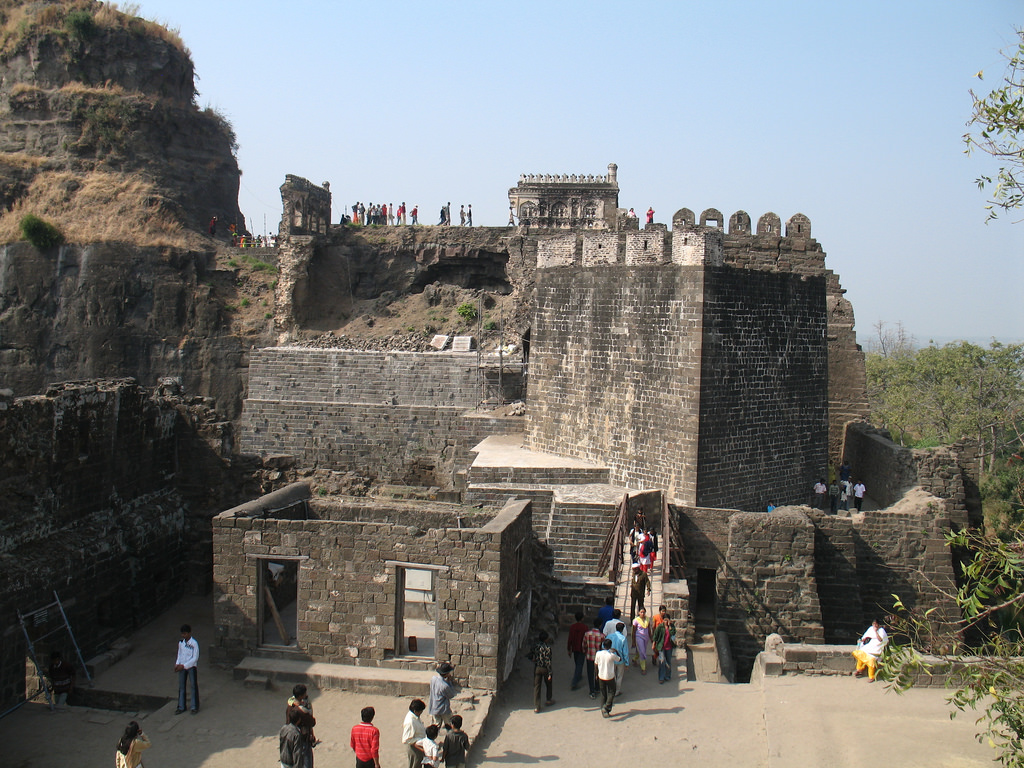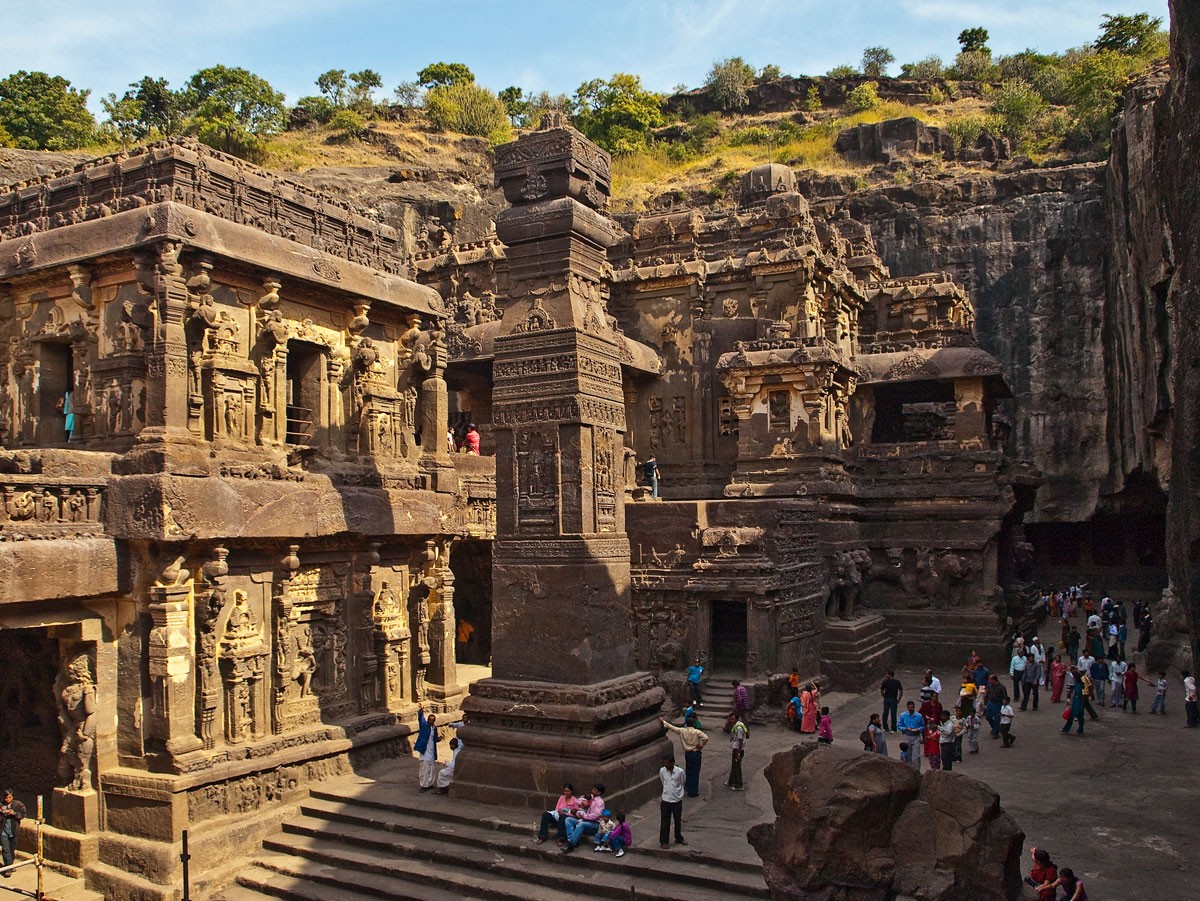
Ajanta Caves
Ajanta Caves In Deccan Basalts
Ajanta is a renowned name in the world of architecture.Amidst a picturesque landscape of Deccan basalt,101 km north of Aurangabad in Maharashtra,there occurs a small hamlet-Ajanta.It has 30 Buddhist rock-cut caves,uniqueAjanta Caves sculptures,carvings and mural paintings. The Ajanta caves possess an invaluable treasure of Indian art which imbibes inspiration in the art-loving people of all generations.The facades of the Chaitya halls show intense ornamentation and carvings.Rocks were hewn out to make figures of classic qualities.The entire course of the evolution of Buddhist architecture can be traced in Ajanta.During this time,images of Buddha on his different life stories and several types of human and animal figures were carved out of in-situ rock. All sections of people of the contemporary society from kings to slaves,woman,man and children are seen in the Ajanta murals interwoven with flowers,plants,fruits,birds and beasts.There are also the figures of Yakshas,Kinnas(half human and half bird),Gandharvas(divine musicians),Apsaras(heavenly dancers)which were of concern to the people of that time.One thousand years of neglect,and exposure to the hostile elements of nature have damaged many of the beautiful works of the past but those which have survived in caves 1,2,16 and 17 can be ranked high among the

greatest artistic works of the contemporary world. The Ajanta caves are excavated in a semicircular scarp of 75 m height overlooking a meandering stream,Waghora that descends as a steep ravine with seven leaps.The caves have a horse-shoe pattern of arrangement covering a stretch of 550 m.Their floor levels are not uniform and they have got no symmetry in their subsurface distribution probably due to their excavation in different times.The individual caves were earlier isolated but are now connected by steps
The Ajanta caves have been cut into the 200 m-thick Deccan trap basalts.The thickness of individual flow varies from 1.5 m to 30 m.The various types of traps recognised in the caves are: 1. Vesicular (a) hard vesicular with or without Ajanta Cavesamygdales-porphyritic/non-porphyritic. (b) soft vesicular with or without amygdales-porphyritic/non-porphyritic. 2. Massive (a) coarse-trap-porphyritic/non-porphyritic (b) fine trap-porphyritic/non-porphyritic There is no significant variation in the mineralogical composition of the various flows occuring in the caves.There is no folding,faulting or tilting in the trap of the area.Ropy structures are prsent in several caves. In the excavation and carving,the soft vesicular variety is generally chosen for their ease in cutting.The vesicles in the basalt are usually filled with zeolite which falls off due to weathering giving the pitted appearance as seen in many of the sculptures.Two kinds of joints are prsent in the rock: (i)horizontal with spacing 2 m or more and (ii) steeply dipping towards NNW or ENE.Contraction cracks(up to 30.5 cm wide) formed due to cooling of basalt and later filled with material of subsequent eruption,are also present.
A distinct method was followed in the excavation of the caves of Ajanta.The layout was marked on the rock-face and the rock-cutting was started from the top and continued downwards towards the floor.The facade-doorway and the verandah were dug uot first and then the interior portions like the central hall, antechamber an cells were excavated. In the two or three-tier caves, cutting of rock started from the topmost tier. A sharp pick-axe was used to make deep incision into the rock followed by breaking of the intervening rock mass till the floor was reached. Solid columns of rocks were left as supports, wherever necessary. Though a

pick-axe was used initially for the excavation, the finishing and carving were done mostly by hammer and chisel. The entire works of quarrying of stones, dressing and finishingAjanta Caves were done simultaneously with great care and precision. The pillars of large halls are 3 m(0.75 x 0.50 m) to 6m (1 x 1m) high. The spacing of the rock pillars in the verandah varies from 1.5 to 3.5 m and the height from 2.6 to 3.5 m in the verandah. The pillars and columns are circular, squarish or octagonal in cross section. The lintel length cut in the rock varies from 1.5 to 4.2 m. Where the rock cover is 50 m or more, the verandahs or chambers up to 21 x 15m and galleries and halls up to 15 x 6.5 m are not supported with pillars as the rock is self-supporting at such places. From the methods of excavation and support followed it seems likely that the ancient builders had sufficient knowledge of the principle of single and multiple beams and cantilever system for distributing the loads.







